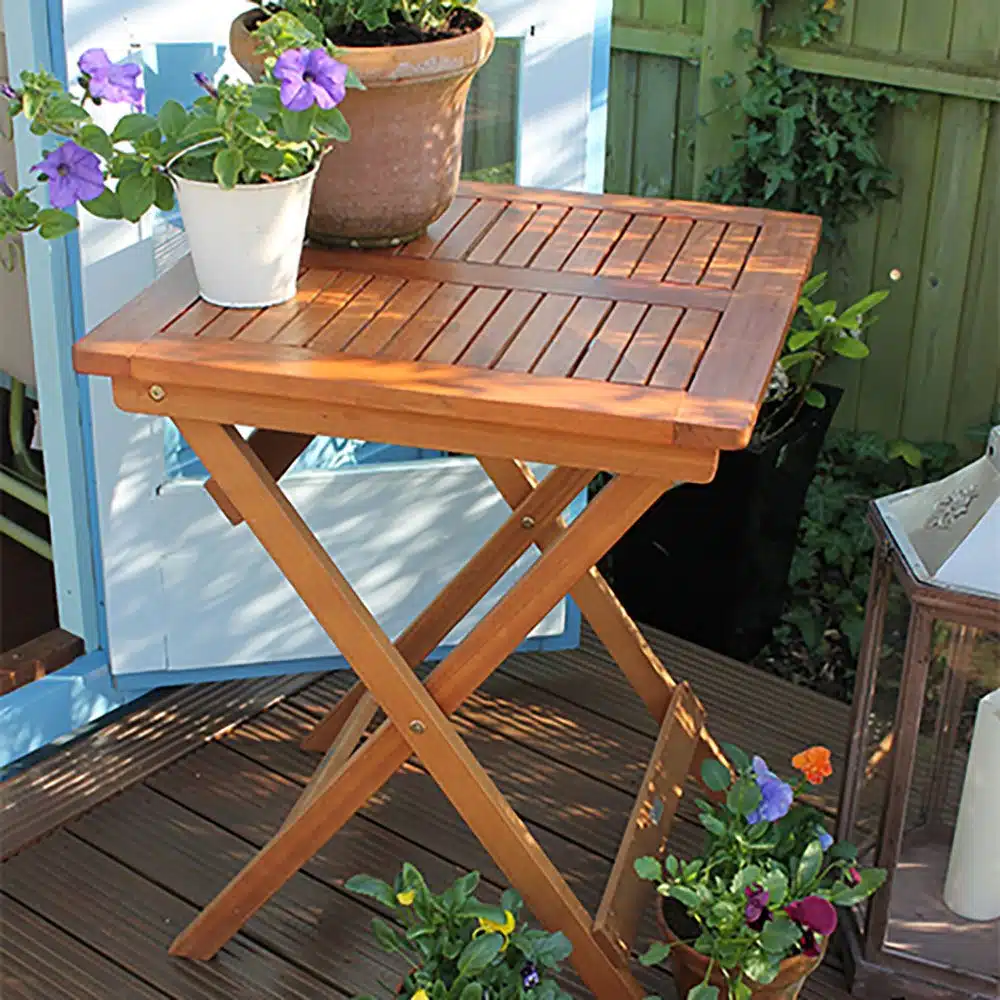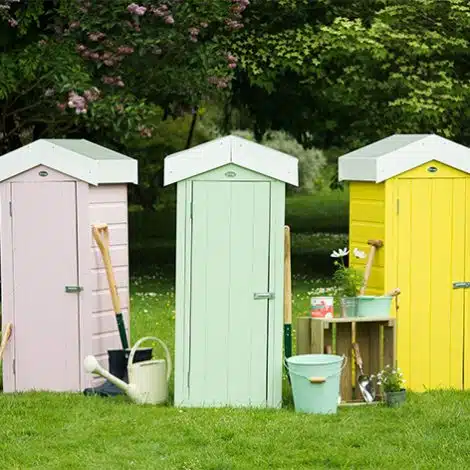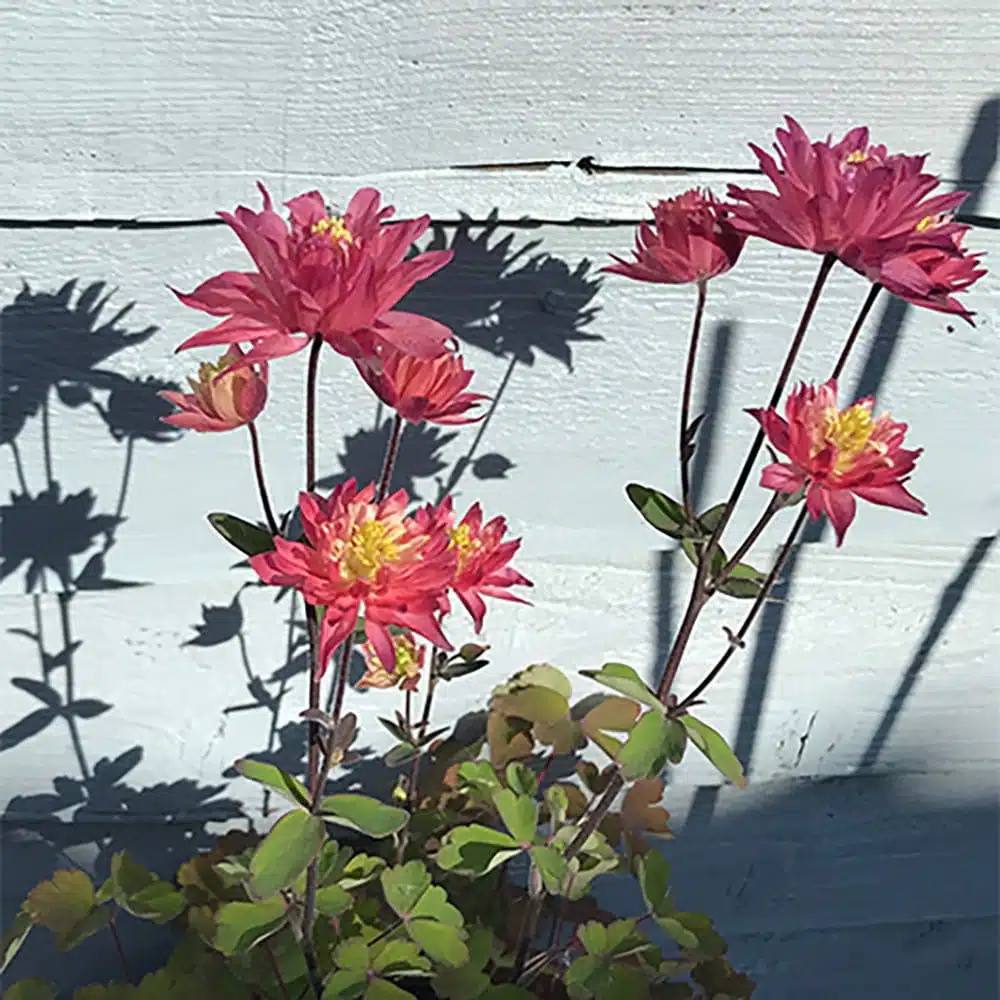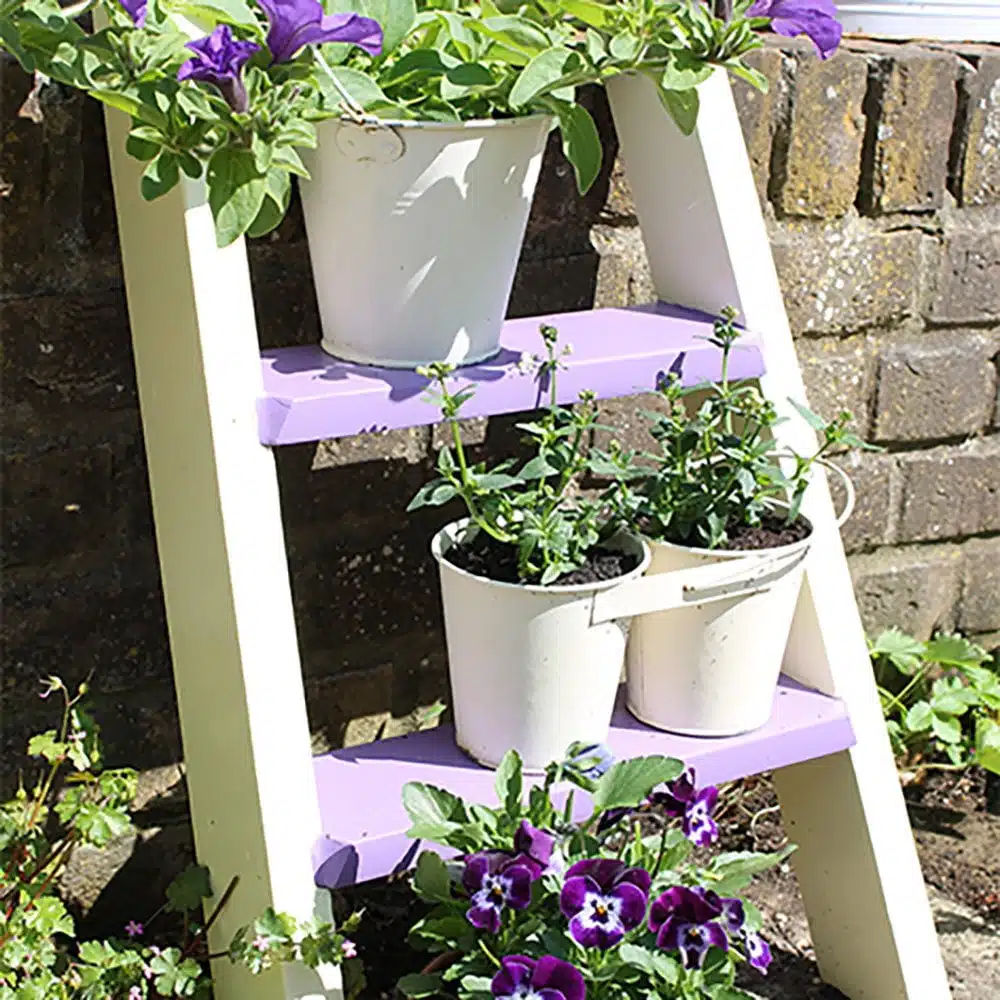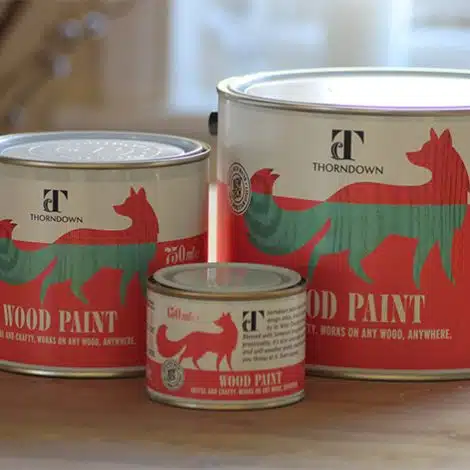Wood paint products
Product Information

WOOD PAINT
ARTFUL AND CRAFTY. WORKS ON ANY WOOD, ANYWHERE.
It’s easy to transform and protect any timber surface with Thorndown Wood Paint, allowing you to be as creative as you like with it.
Whether you paint straight from the tin or choose to mix colours or dilute it for a stain effect we just want it to be fun. But remember not to reward yourself with a cider until the painting is done.
- Eco based – Waterbased eco product with minimal VOC (Volatile Organic Compounds) at 0.28%
- Satin finish with a soft sheen at 20% (the acrylic resin we use produces a soft sheen that increases with each coat applied)
- Made with architectural exterior-grade VOC free colour pigments that provide long-lasting UV protection
- Unique blend of resings including a 100% recycled plastics resin made from car windscreen laminate
- Gorgeous core colour range – 49 heritage and modern colours + UV Clear for totally clear protection
- Somerset Heritage Colour Collection with 24 natural countryside colours
- 1800 RAL Classic and Design colours, 2050 NCS colours, 924 Pantone C and 434 British Standard BS318C BS4800 BS5252F also available
- One wood paint product for any timber application; interior, exterior, softwood & hardwood, tropical wood, accoya, MDF & plywood, and pressure-treated timber
- UV Clear with added UV blocking protection to keep wood looking good longer
- Translucent wood colours
- Opaque and semi opaque paint colours
- Grain visible with a delicate and beautiful satin finish (sheen level 20%)
- Very strong bond with timber
- Great coverage at up to 12m2 per litre per coat on smooth/planed surfaces
- Self-priming with minimum of prep required and can be painted on bare or previously coated wood
- Primer only required on oily/tropical woods or resinous woods where our Stain Blocking Primer should be used to prevent possible resin bleeds and tannin stains on the paint coating
- Can be applied in temperatures as low as 0oC but don’t let it freeze in the tin or on the wood
- In warm dry conditions paint dries ready for overcoating in 30-60 minutes
- High solids content requiring fewer coats for a stunning rich and deep coating
- 2 coats recomended for full exterior protection but 1 coat will suffice for more regular treatments
- Water repellent, micro-porous so allows the wood to breathe, and frost resistant
- Contains flash rust protection to stop rust from forming on metal and staining the wood paint coating, as of April 2022
- Coats metal, masonry, terracotta and plastic including uPVC window frames. Applying a primer prior to painting increases the strength of bond to these substrates
- Use indoor or outdoor
- Perfect for all interior wood from skirting boards, doors, door & window frames, to furniture and panelling
- Can also be painted on walls for a durable and washable satin finish
- Strong resistance to UV degradation and colour fade – strong external grade colour pigments
- Colour tinting technology that is 99.9% accurate
- Mix colours together easily to create your own shades
- Mix with UV Clear to make more transparent or dilute with water (up to 50%) for a wood stain effect
- Apply using a high quality synthetic brush, roller or HVLP sprayer including industrial spray booths
- Highly durable for long-lasting protection and easy cleaning
- Clean paint-wet tools easily with water using a spot of detergent if required
- Made in Glastonbury, Somerset, UK using green energy, sustainably sourced raw materials and very low carbon footprint
- Our metal paint tins are fully recyclable along with all packaging used
We’ve produced some handy reference guides for you including this Coverage Calculator that provides a rough guide of how much paint you’ll need for a project and Thorndown Wood Paint Coats for how many coats/layers you’ll need. You can download the simple pdf guide called Thorndown Wood Paint Painting in Winter Tips, or follow this link to Painting Exterior Wood in Winter with Thorndown Wood Paint.
View and download Thorndown Wood Paint Product USPs and Thorndown Wood Paint Main Features for quick reference guides. There’s also a handy guide to explain The Difference Between a Water Based and Oil Based Paint.
Finally there is the Thorndown Wood Paint Product Information and Application sheet for a complete reference guide. Follow this link for a video tutorial on how to paint with Thorndown Translucent Wood Paints.
Application Guide
What you’ll need
Brush (good quality synthetic brush gives the best results), roller (small or medium nap ‘hairy’ roller rather than foam), or sprayer (HVLP); also sandpaper, wood preserver and/or knotting agent or stain blocking primer to block resin bleeds and tannin stains (if required); vision.
Preparation
Make sure all surfaces are clean and dry. Timber should be fully dry prior to painting for the wood paint to adhere to the surface. Moisture content should be <20%. You can get a domestic protimeter at a fairly reasonable price to measure moisture content, or use the sharp end of a screw or nail and press into the surface of the timber. If the timber turns dark with moisture around the point then it’s too damp to paint effectively.
For best results, sand surfaces and use a wood preserver and/or knotting agent or stain blocking primer to block resin bleeds and tannin stains (if required).
WOOD PRESERVER
Normally you won’t need to apply a Wood Preservative as the majority of softwood timber products are pressure-treated with a wood preservative product. Hardwood has natural protection so doesn’t need a preservative. If your softwood timber hasn’t been pre-treated then painting it with a minimum of 2 coats of Wood Paint will seal the wood against water ingress, which is the common cause of rot. Just make sure to fully seal when you’re painting making sure there aren’t any edges, nail holes, or knot holes that will allow the water to enter the timber.
You can use Thorndown’s Wood Preservative, a water-based ready-to-use product that acts against rot and blue stain fungi. Find out full product information and application advice here or follow this link to Wood Preserver product.
PRIMER
A knotting solution is painted over the top of knots to stop them from excreting resin. Not all knots will be resinous and whether you use a knotting agent is a choice of aesthetics. Many people use a knotting agent on wood such as internal skirting boards or external fascias when painting them in a light paint colour to stop staining coming through the coating.
Resin can bleed out of knots and tannins expired from timber causing staining to coating. If you don’t want a paint coating to have possible resin bleeds or tannin staining then apply a water-based stain-blocking primer prior to painting. Thorndown’s Stain Blocking Primer is a high-performing water-based multi-surface primer that bonds really well and blocks tannin staining and knot bleeds. Visit Advice – Stain Blocking Primer for full product information and application advice, or follow this link to see the Stain Blocking Primer products and colour options.
In most cases you do not need a primer when using Thorndown Wood Paint as it bonds really well to wood. We would normally only recommend a primer if applying to metal, masonry, uPVC, veneers including melamine, laminates (basically all slippery coating materials applied on top of wood), or oily hardwoods. Oils in hardwoods (and surfaces historically treated with oils) can inhibit the wood paint from bonding properly, hence the primer being used to provide a surface that the wood paint can bond firmly to. With metals, masonry and uPVC, Thorndown Wood Paint adheres well but as it was specifically designed for Wood Paint, the coating hasn’t been tested for longevity on these substrates, hence the recommendation to use a primer. If any of these substrates have already been painted (such as metal garage doors) then our paint will bond to the previous coating so shouldn’t need a primer. Just make sure the old coating is clean and dry and sand off any loose old coating if required. With galvanised steel a primer is needed as the surface is too ‘shiny’ for the wood paint to fix to.
Mdf also benefits from a coat or two of stain blocking primer as it’s a thirsty material that can also create staining on paint coatings.
Thorndown Wood Paint contains flash rust protection to stop rust from forming on metal and staining the wood paint coating, as of April 2022.
Wear appropriate clothing when handling paint as it will stain clothes.
DILUTION
If you want a wash or wood stain effect (instead of paint) dilute with water up to 1:1 (50%). For full protection, you can then use an undiluted top coat of Thorndown ‘Clear’ Wood Paint. See our Projects page for more information and ideas.
APPLICATION
First thing to do is thoroughly mix your paint prior to painting. Paint will settle out to differing degrees with ingredients such as the resin and heavy colour pigments dropping to the bottom with lighter materials such as water and lighter colour pigments at the top. Unless you mix the paint back in properly you won’t get the right colour and the paint will appear watery.
I think paint is best ‘Shaken and Stirred’, so shake the sealed tin vigorously for about 20 seconds then stir thoroughly with a proper paint stirrer, large spoon, whisk or hand blender (not thin stick as this won’t work) for about 30 seconds to a minute or longer depending on how long the paint has been sitting for. One rule is a minute per month the paint has been waiting to be used. This will make sure that everything is mixed back in properly and your paint will work effectively. If paint isn’t mixed properly it won’t work properly!
Use a brush, roller, pad or sprayer. We recommend the use of a good quality synthetic brush as they will give the best finish. A small or medium nap ‘hairy’ roller sleeve works best for roller application. When spraying use a HVLP (high volume low pressure) sprayer and do not dilute the wood paint otherwise you’ll be diluting the effectiveness of the product and the colour, and it can produce a patchy coating . Just pour it in and spray on the usual 1-2 coats. Works very well for commercial use in spray-booths.
Avoid the rain, and apply with the grain’, as they say, and leave to dry. Make sure rain isn’t forecast for 24 hours when painting externally to make sure the coating has fully bonded and cured. Although Thorndown Wood Paint dries quickly in fine, warm, dry weather, touch-dry coatings will still be drying for quite some time, especially in cold damp conditions when drying time is longer.
You can paint Thorndown Wood Paint in temperatures as low as 0°c but remember that in these conditions, drying time will be greatly extended. In cold weather it can be sensible to paint one coat at a time to allow plenty of time for the paint to fully dry, for example if you’re painting the exterior of a door, start in the morning and paint on one coat then leave all day to dry before shutting the door. This single coat will give you a good level of protection and the next time you get a good 24 hours of dry weather, paint on the second coat starting in the morning and leaving all day to dry. If you were to put 2 coats on in cold damp weather, the top coat may not have have sufficient time to fully bond and cure before you shut the door overnight which can cause damage to the coating where it is shut against the door frame. You can download the simple pdf guide called Thorndown Wood Paint Painting in Winter Tips, or follow this link to Painting Exterior Wood in Winter with Thorndown Wood Paint.
When coating large areas, paint up to still-wet paint, as applying over dry paint can make things look uneven.
TRANSLUCENT WOOD PAINTS
Translucent wood paints need to be treated like wood stains and the appropriate painting technique adopted. They are often not suitable for overcoating solid colour coatings and work best on fresh timber or in maintenance of a similar coating. Best applied with a small amount on the brush or roller, working the paint in well and spreading it out in small methodical stretches, painting with the grain and up to still wet paint to avoid patches and streaks. Follow this link for a video tutorial on how to paint with Thorndown Translucent Wood Paints.
Semi-opaque and light off-white wood paint colours can require 3 coats to create a solid/opaque colour coating and may require a primer if over-coating a previous coating.
You can paint Thorndown Wood Paint on top of oil-based paints and primers as long as the coating is totally dry and all oils have expired off. Some oil paints can take a very long time to dry and oil residue can repel a water-based paint and lead to it not being able to fix and bond properly.
COATS
One coat can do the trick, but additional coats will offer greater protection and enhance colour. We always recommend at least two coats for protecting timber from water or the weather. Lighter colours such as creams and off-whites can look best with 3 coats although if you’ve applied a coat of Thorndown’s White Stain Blocking Primer you should only need 2 top coats. Semi-opaque colours such as Golden Somer can also look better with a 3rd coat.
For UV Clear we recommend applying 3-4 coats to make sure that the coating is nice and strong. With coloured coatings you can see when and what you’re painting, easily noticing if you’ve missed any sections or if any parts are thin and streaky offering little protection. With UV Clear it isn’t so easy to spot thin or patchy painted areas so painting 3-4 coats will make sure that you haven’t missed anything and your timber is fully protected from the elements.
DRYING
In fine weather, a single coat dries easily in an hour or two (20oC and low humidity). In colder, damp conditions drying times can be greatly extended. If you want to slow the drying process, just add a little water.
CLEANING UP
Use hot or cold water, with or without detergent, on paint-wet equipment.
Be very careful not to allow sprayer nozzles to dry out – this will make cleaning them almost impossible!
STORAGE
Paint will keep for approximately 2 years or more in a sealed tin stored out of freezing or extremely high temperatures. Just mix well before use as the paint will have separated a lot over the years. Using a cheap hand blender does the job very well and with no effort!
DISPOSAL
Please, please don’t throw away unused or dried paint or preserver into drains or watercourses. Most local authorities have free facilities for disposing of paint and coatings.
All of the packaging we use is fully recyclable.
- Box – made from FSC cardboard and fully recyclable
- Internal packaging – loose starch fill is biodegradable and compostable. Moulded tin protectors are made from recycled cardboard and are fully recyclable
- Tins – wash them out and they’re fully recyclable
COVERAGE
You’ll paint 6 (rough sawn) to 12 (planed/smooth) square meters of timber surface (one coat) with one litre; rough sawn surfaces will take a lot more paint than a smooth surface. Further coats take up a lot less than the first.
So each paint can will do:
- 150 ml 0.9 to 1.8 square meters
- 750 ml 4.5 to 9.0 square meters
- 2.5 l 15 to 30 square meters

